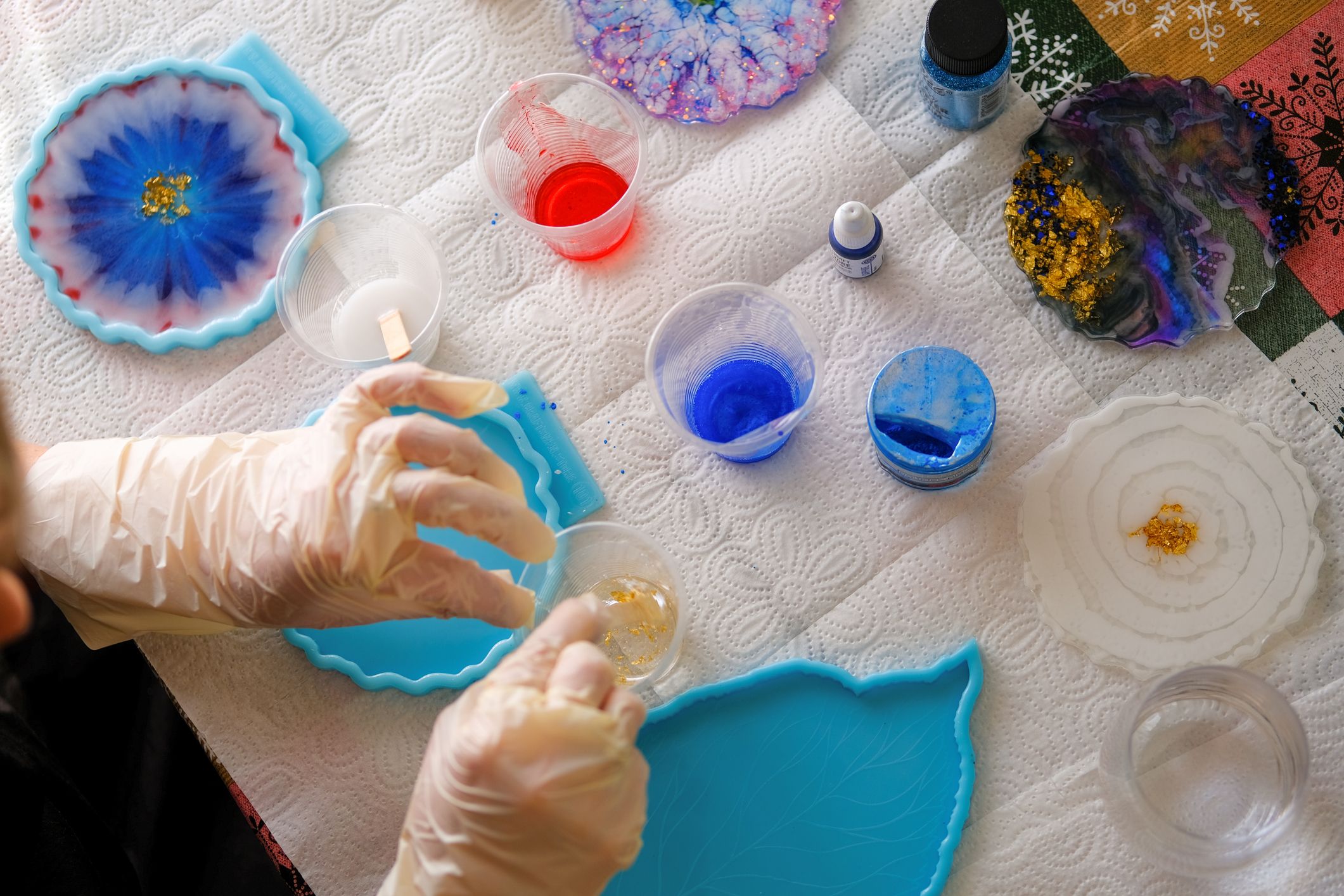What Is Epoxy Resin? A Simple Beginner's Guide to This Versatile Material
Epoxy resin is one of the most popular materials used in DIY projects, handmade crafts, and modern wood furniture. If you're curious about working with resin but still unsure what it is, whether it’s safe, or how to use it — this guide is here to help you get started confidently and creatively.
1. What Is Epoxy Resin?
Epoxy resin is a type of synthetic plastic made by mixing two components: Part A (resin) and Part B (hardener). When combined, these two parts trigger a chemical reaction that turns the liquid into a solid — strong, clear, and durable.
It’s a thermosetting polymer, meaning once it cures, it can’t be melted or reshaped. Thanks to its glossy finish, excellent durability, and water resistance, epoxy resin is used in a wide range of applications from art to industry.
2. Common Types of Epoxy Resin
Not all epoxy is created equal. Depending on the purpose, there are several types of epoxy resin you might encounter:
-
Casting Resin – Designed for deep pours, slow curing, and ultra-clear finish. Ideal for making river tables, resin lamps, or handmade jewelry.
-
Coating Resin – Fast-curing and great for surface applications like tabletops, coasters, or sealing wooden artwork.
-
Industrial Epoxy – Strong, chemical-resistant epoxy used in construction, electrical insulation, and automotive applications.

3. Popular Uses of Epoxy Resin
🎨 In Arts & Crafts:
-
Perfect for making jewelry, keychains, coasters, hair clips, dried flower decor, and more.
-
Used in resin paintings, 3D layering art, or abstract designs.
🪵 In Woodworking:
-
Used to fill cracks, cast river effects, or combine with wood in furniture design.
-
Great for making epoxy wood tables, resin lamps, and custom décor pieces.
🏭 In Industrial Use:
-
Floor coating in garages and warehouses for durability and anti-slip safety.
-
Protective coating and insulation for circuit boards and electronics.

4. Key Benefits of Epoxy Resin
✅ High-gloss and crystal-clear finish
✅ Water and chemical resistant
✅ Extremely strong and durable
✅ Easily customizable with colors, pigments, and materials
✅ Versatile for creative and practical applications
5. How to Use Epoxy Resin – Step-by-Step
-
Prepare your materials and workspace – gloves, mask, mold, and mixing tools.
-
Mix resin and hardener according to the correct ratio (usually 1:1 or 2:1).
-
Stir slowly and thoroughly to avoid air bubbles.
-
Pour into the mold or surface you want to work with.
-
Use a heat gun or torch to remove surface bubbles.
-
Let it cure (usually 8–48 hours depending on the formula and depth).

6. Is Epoxy Resin Safe?
Liquid epoxy can irritate the skin, eyes, and respiratory system before it’s fully cured. Safety tips:
-
Always work in a well-ventilated area.
-
Wear protective gloves, eyewear, and a mask.
-
Keep uncured resin away from food, pets, and children.
Once fully cured, epoxy resin is non-toxic and safe for decorative use.
7. Things to Consider When Buying Epoxy Resin
-
Choose based on your project type: deep pour or surface coating?
-
Check the viscosity, working time, and curing time.
-
Make sure to follow the recommended mixing ratio.
-
Look for low-odor, low-bubble formulas if you're a beginner.
-
Buy from trusted brands for consistent, professional-quality results.
Final Thoughts
Epoxy resin is a game-changer for DIY lovers, artists, and woodworkers alike. With a little preparation and safety care, you can create unique, high-quality pieces that are both beautiful and long-lasting. Whether you're pouring river tables or making custom art, the possibilities with epoxy are truly endless.













